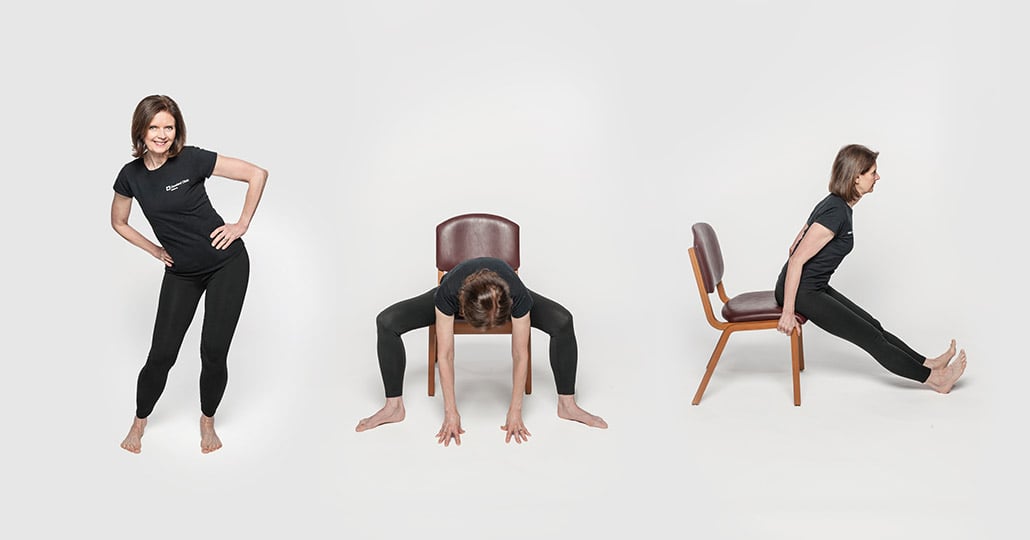WELLNESS
Boost Your Energy
As the days get shorter and the weather gets colder, many of us begin to feel like we’re running on empty. We’ve asked three Cleveland Clinic experts to share tips to keep your engine humming and your foot on the accelerator to get you through the winter doldrums.
Edited By Cindy Fink and Elizabeth Misson
Photo: Getty Images
1. Count on Cardio
It may seem counterintuitive, but when you’re in a slump, try exercise rather than a nap. Increasing your heart rate gives you an energy boost immediately, and little efforts make it happen. Go for a brisk walk outside, climb a couple of flights of stairs or walk in place. After about 20 to 30 minutes of any form of cardiovascular exercise, your body releases endorphins, which are the “feel-good hormones.” The more intense the exercise, the more endorphins, which have been shown in studies to alleviate anxiety, decrease depression and improve sleep. A routine of easy yoga postures/stretches in the middle of your day also can revitalize you. Try these:

Photo: Ken Baehr
1. Hip Circles - With your knees soft and feet shoulder-width apart, circle your hips four to eight times in each direction.
2. Wide-Legged Fold - While seated, open your legs wide and slowly lean forward, draping your spine down and allowing your head and arms to hang. Come up slowly to release.
3. Hamstring Stretch - Sit on the edge of a chair and extend your legs out in front of you (heels down, toes up). Hold the chair and lean forward with a long spine until you feel a healthy stretch in the back of your legs.
By Katie Lawton, MEd Exercise Physiologist, Rehabilitation & Sports Therapy Department

Photo: Getty Images
2. Make time for Mindfulness
No matter how much you try to squeeze into a day, a few minutes practicing these easy techniques can restore perspective, bring calm and, yes, boost your energy.
Get your gratitude on. Our brains are wired for survival by planning for worst-case scenarios. This can get in the way of appreciating the good in the world and our lives. Gratitude for big and small things is powerful for a healthy perspective and a healthy mind. At bedtime each night, pause and think of three good things about your day. The positive emotions this exercise sparks can boost your mood and improve your sleep, both important for your energy level.
Create some space. Carving out your own quiet time in a space that is only yours for just five minutes is enough to restore a great deal of your energy. Be by yourself, sitting or standing quietly.
Look around and be present in your surroundings.
This is niksen — Dutch for purposefully doing nothing — and it can lower your heart rate and blood pressure, release tight muscles and boost your energy level.
Share a positive force field. The electromagnetic field of your heart extends 4.5 feet around you, so your energy and emotions influence others and vice versa. When you’re feeling at your lowest, it really does help to be in the company of others who are upbeat and enthusiastic. Be conscious of the kind of energy you are allowing in. Seek out positive people whose heart force fields will re-energize you.
Don’t discount sleep. It can never be overstated. The wheels fall off if we don’t have enough sleep. Burnout happens most quickly to those who are sleep-deprived.
By Jane Ehrman, MEd, CHES, CHT, Behavioral Health Specialist, Center for Integrative and Lifestyle Medicine. Find more of her tips at ImagesOfWellness.com
3. Mindful Mouthfuls
It’s easy to put on weight around the holidays and during the winter months. One way to avoid packing on pounds is to incorporate these mindful eating habits:
Susan Albers, PsyD, of Cleveland Clinic shares “The 5 S’s of Mindful Eating.”

Photo: Getty Images

Photo: Getty Images
1. Sit down. Have a seat! Avoid nibbling in front of the refrigerator or snacking in your car. Put food on a plate. You’ll enjoy food more and eat less when you give eating your full attention. Only eat off your feet.
2. Slowly chew. Eat with your non-dominant hand (if you’re right-handed, eat with your left). Research indicates that eating with your opposite hand can reduce how much you eat by 30%. Intentionally chew more slowly than the person you’re eating with. Pace, don’t race.
3. Savor. Take a mindful bite. Smell. Taste. Notice and look at each spoonful. Turn off the TV and other distractions. When you eat, just eat.
4. Simplify. Put healthy foods in a convenient place — on the counter, for example. Place treats out of view. Studies show that people tend to eat what’s in their immediate reach. In sight, in mind; out of sight, out of mind.
5. Smile. Smiling can create a brief pause between your current bite and the next one. During that gap, ask yourself if you’re just satisfied, not full. Take a breath to manage stress.
By Susan Albers, PsyD, Department of Psychiatry and Psychology, Wooster Family Health Center. Find her online at EatingMindfully.com.
Research assistance provided by Blaise Sypen.
